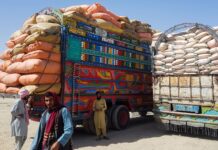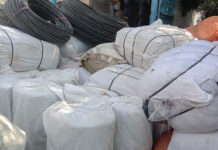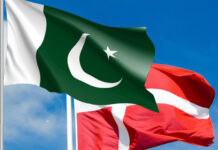ISLAMABAD: Apart from the falling exports especially of textile made-ups, which earn 60 percent of the total foreign exchange of the national economy, the export of horticultural products are also likely to show drastic decline this year due to, what growers/exporters believe, damaged crop and technical hindrances.
According to growers sudden change in weather condition in Sindh and South Punjab following heat waves and hailstorm in the month of April have damaged the crop of mango, known as king of fruit, badly. Besides, a disease known as ‘Powdery Mildew’ in Punjab has also damaged the crop of mango,
The sudden rise in temperature in South Punjab including Multan by 40 degrees Celsius in the month of April against the expected temperature between 32 degrees Celsius and 34 degrees Celsius for the mango crop was a major cause of damage to crop. Fruit shedding was started at a time when its size was smaller and needed conducive weather condition. According to the growers, mangoes start falling off trees due to high temperatures and also develop spots on skin. The worst of them is a disorder called spongy tissue. It is a ripening disorder, which dries out the mango from inside, leaving a white dry mass. The mango looks perfectly ripe from outside but it is damaged from inside.
Apart from the damages to mango crop in Punjab, hailstorm had also badly damaged the fruit in Hyderabad, Tandu Adam, Tandu Allah Yar and adjoining areas of these districts in Sindh.
Amidst the damaged crop and less production of qualitative mango, the target of 100,000 tons exports is unlikely to be achieved this year.
According to Waheed Ahmed, head of All Pakistan Fruit & Vegetable Exporters, Importers & Merchants Association (PFVA) the damages caused to mango by climate change was worst in the history of Pakistan. He believed 50-60 percent of the mango crop was affected in Punjab whereas, some 15-25 crop was damaged in Sindh.
He said that the collective production of mango is also anticipated to decline due to prolonged winter season, hail storm and strong winds. Pakistan’s mango production is expected to decline from 1.8 million tons to 1.2 million tons during this season. However the extent of damage can only be ascertained by June when crop would be available in the market, he mentioned.
He said unlike rest of mango producing countries, Pakistan was yet to move forward for taking steps reduce the damages of climatic changes. Climate change has become challenge for the entire agriculture sector including horticulture sector and government can find appropriate solution by using technology, he added.
Pakistan is the sixth largest mango producing country of the world. Major markets for Pakistani mango are the UAE, Saudi Arabia, Kuwait, Amman, France, Afghanistan, Germany, Bahrain and the UK.
Apart from the damage to crop, the rise in air freight by Pakistan International Airline (PIA) was also hampering export of the perishable item. Waheed Ahmed said that PIA has significantly raised the freight charges this year ignoring the fact that the frequent windstorms in Punjab had badly hit the [mango] production. The air freight charges were raised to Rs160 per kilo as compared to previous rate of Rs140. Following PIA private air lines have also raised their freight rates.
























